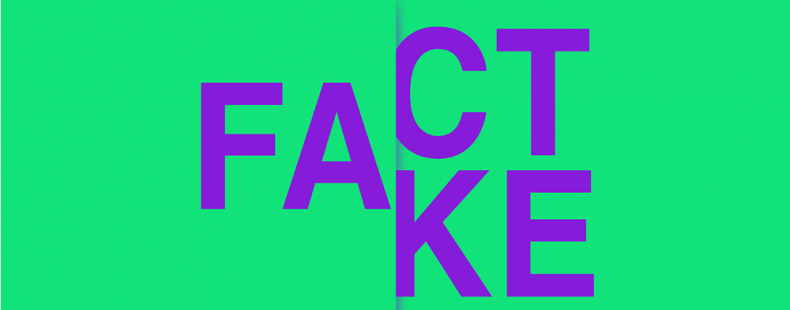Information has real-life consequences. It can be a literal life-saver—when it’s true. Unfortunately, the opposite is also true. Untrue information can cause great harm. Like a virus, wrong information can spread, causing what’s been called an infodemic.
Now more than ever, we are experiencing the spread of two forms of wrong information: misinformation and disinformation. These two words, so often used interchangeably, are merely one letter apart. But behind that one letter hides the critical distinction between these confusable words: intent.
Let’s get the facts on misinformation vs. disinformation.
What is misinformation?
Misinformation is “false information that is spread, regardless of intent to mislead.” Put a flag in the second half of this definition; it will be important later.
The spread of misinformation happens often in our everyday lives. We human beings—news flash—are not perfect. We can all make mistakes. We all forget things. We mishear or misremember details. We tell our friends something we heard on TV or saw on social media that wasn’t really true. If you are spreading around information that is wrong but you don’t know it is wrong, then you are, well, technically, spreading misinformation.
And when we say misinformation is an everyday thing, we mean it. For example, say a party starts at 8pm, but you forget or misread the invitation and tell your friends it starts at 9pm, you are supplying them with misinformation. But don’t fear: we’re not calling the fact police on you! The key, here, is that you unwittingly spread false information around; you didn’t mean to, or even might have thought the information was true.
Misinformation doesn’t care about intent, and so is simply a term for any kind of wrong or false information.
Today, misinformation spreads very easily thanks to technology. On social media, users have—as just one tiny instance—shared stories about dolphins and swans swimming in the canals of Venice without checking if those stories are true (they weren’t). And in part because of such frequent incidents, it is a hot topic of debate if big tech companies like Facebook and Google should be responsible for stopping the spread of misinformation—or even if they even can without violating the First Amendment freedom of speech rights of their users.
It is problems like these that motivated us to pick misinformation as our Word of the Year in 2018. Misinformation was top of mind that year, with governments, businesses, and the broader culture grappling with how to stop dangerous misinformation—which, if deliberately weaponized, can become disinformation.
Where does misinformation come from?
Misinformation is first recorded in the late 1500s, and combines information with the prefix mis–, meaning “wrong” or “mistaken.” Mistake, misspelling, and misunderstanding are some examples of other common words besides misinformation that use mis– to mean “wrong.”
Misinformation is, of course, related to the verb misinform, which means “to give wrong or misleading information to” and is first recorded around 1350–1400. You’ll notice that misinform, like misinformation, also makes no mention of why this wrong information is being spread around, only that it is.
What is disinformation?
Disinformation means “false information, as about a country’s military strength or plans, disseminated by a government or intelligence agency in a hostile act of tactical political subversion.” It is also used more generally to mean “deliberately misleading or biased information; manipulated narrative or facts; propaganda.”
So, disinformation is misinformation that is knowingly (intentionally) spread. Our first definition of this word gives one major reason why a person or group might want to spread wrong information, but there are many other nefarious motivations lurking behind the creation of disinformation.
Let’s go back to the earlier example. Now, if you know a party starts at 8pm but tell your nemesis it starts at 9pm because you want them to look foolish, you are supplying them with disinformation. (Take that, Steve!) When you spread wrong information on purpose, with intent to deceive and mislead—that’s disinformation.
Disinformation is very powerful, destructive, and divisive, and is a common tool of espionage. Countries often have an interest in intentionally spreading fake information to their rival nations, as the Soviet Union and United States did during the Cold War, for instance. When a country or group coordinates a complicated plan of spreading disinformation, it is often referred to as a disinformation campaign.
Propaganda, which is information spread to make someone or something look bad or good, can be disinformation. Modern dictatorships, such as in North Korea, use propagandistic disinformation to make their citizens believe their government is good or righteous, and that enemy countries are evil. As a recent example, the United States State Department accused the Chinese government of supporting an online disinformation campaign that spread false information about COVID-19 and blamed the outbreak on the United States.
As dangerous as disinformation can be, journalists find themselves in a difficult position when investigating it. While politicians might say something that is obviously not true, journalists generally don’t outright accuse them of being a liar or spreading disinformation. This is because journalists cannot usually be 100% certain of the intent behind the misinformation, and they (and all writers) can be sued for libel if they wrongfully call someone a liar.
Where does disinformation come from?
Compared to misinformation, disinformation is a relatively new word, first recorded in 1965–70. It’s a translation of the Russian word dezinformátsiya, in turn based on the French désinformer (“to misinform”).
In English, the prefix dis- can be used to indicate a reversal or negative instance of the word that follows. For example, disrespect and disobedience are opposites or negations of respect and obedience. Disinformation, then, can be understood as “reverse information” or “anti-information” specifically created to deceive and misguide other people.
How to use misinformation and disinformation
When distinguishing between misinformation and disinformation, keep one very important word in mind: intent. Although both words refer to types of wrong or false information, only disinformation is wrong on purpose. While this distinction may seem simple enough, misinformation and disinformation are similar and sometimes interconnected, and so get used interchangeably.
But accuracy matters. Use the word disinformation when you know for a fact that false or erroneous information is being spread on purpose to hurt or damage, especially a government, organization, or public figure. If you don’t know for certain why someone is spreading bad information, it’s best to use misinformation.
Conspiracy theories, propaganda, deepfakes, fake news, hoaxes, frauds, Photoshops, scams—in the digital age, misinformation and disinformation are rampant. To help you sort out fact from fiction, consult some of the many trustworthy guides and resources to build up your media literacy.














